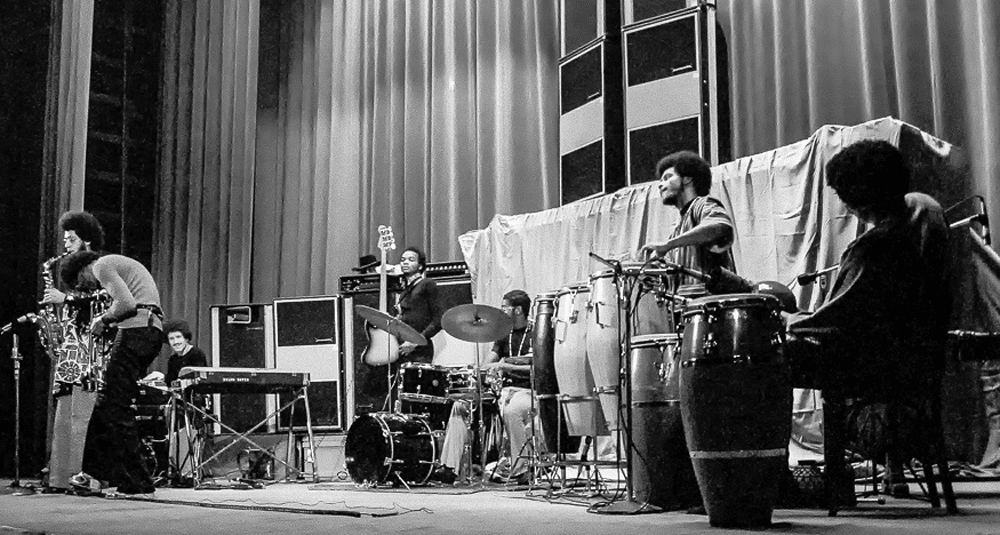How many musicians appear on Miles Davis’ album Birth of the Cool?
Last Updated:
Birth of the Cool, a revolutionary album in jazz history, was released in February 1957. Its release marked a turning point in the world of jazz music, introducing new perspectives and techniques to the genre.
This iconic album was released by Capitol Records, a label renowned for its significant contribution to the music industry. The collaboration between Miles Davis and Capitol Records played a key role in the spread and recognition of this innovative style.
Birth of the Cool is primarily associated with cool jazz, a genre distinguished by its softer, more reflective approach than the more energetic bebop. The album also incorporates elements of bop as well as West Coast jazz influences, offering a unique and captivating fusion that has redefined contemporary jazz.
This Miles Davis masterpiece was recorded by a nonet, an ensemble of nine talented musicians. Each artist brought his or her own unique touch to the album, contributing to its rich texture and depth of sound.
Miles Davis, at the top of his game, played trumpet, setting the tone and direction of the album. Lee Konitz played alto saxophone, bringing remarkable clarity and fluidity. Gerry Mulligan, on baritone saxophone, added exceptional depth to the ensemble’s sound.
Junior Collins and Sandy Siegelstein play horn, enriching the album with orchestral nuances, while Bill Barber, on tuba, provides a solid and unique foundation. The combined talents of J. J. Johnson, Kai Winding and Mike Zwerin on trombone create a rich and varied texture.
On piano, Al Haig and John Lewis provided essential harmony and rhythmic structure, while Joe Shulman, Nelson Boyd and Al McKibbon on double bass anchored the ensemble with their steady, melodic playing. Each musician played a crucial role, contributing to the originality and innovation for which Birth of the Cool is renowned.
The combination of these exceptional talents resulted in an album that not only defined a genre, but also paved the way for new musical explorations in jazz. The contribution of each musician was essential in creating the atmosphere and texture that make Birth of the Cool so distinctive and timeless.
Miles Davis’ Birth of the Cool album is punctuated by several tracks that stand out for their innovation and quality. Compositions like Move and Godchild offer a dynamic blend of driving rhythms and captivating melodies. Deception and Venus De Milo stand out for their harmonic complexity and sophistication. Jeru and Rocker are remarkable for their fluidity and avant-garde approach to jazz. These pieces symbolize Miles Davis’ musical exploration and his talent for pushing the boundaries of the genre.
Miles Davis drew his inspiration for Birth of the Cool from a variety of sources. Deeply influenced by bebop, he incorporated stylistic elements from legendary musicians such as Charlie Parker and Dizzy Gillespie. Gil Evans’ arrangements for Claude Thornhill’s orchestra also had a notable impact on him, shaping his musical vision and approach on this album. These influences have enabled Mile Davis to create a body of work that is both rich in tradition and bold in innovation.
The Birth of the Cool album is often considered the catalyst for the cool jazz era. It revolutionized the genre by introducing instruments traditionally associated with European classical music, such as the tuba and French horn, into the jazz context. This fusion of classical and jazz elements opened up new expressive avenues in the genre and greatly influenced its evolution. The innovative use of these instruments gave cool jazz its characteristic sound, marking a break with the conventions of bebop and paving the way for more nuanced and subtle musical explorations.
Birth of the Cool had a profound effect on Miles Davis’ artistic trajectory. The album not only cemented his reputation as an innovative musician, but also significantly influenced his future work. The concepts and techniques explored on this album continued to fuel his later musical experimentation, playing an essential role in the development of his prolific and diverse career.
Beyond Mile Davis’ career, Birth of the Cool left an indelible mark on the jazz landscape. The album played a major role in transforming the genre in the second half of the 20th century. It helped popularize jazz, making it more accessible and appealing to a wider audience. By breaking conventions and introducing new sonic elements, Birth of the Cool opened up unprecedented horizons, inspiring generations of musicians and redefining the way jazz was perceived and appreciated worldwide.
You may also be interested in
music

How many musicians appear on Miles Davis' album Birth of the Cool?
Answer
Birth of the Cool is a jazz album by Miles Davis released in 1957. It is a nonet (nine musicians), whose each section must imitate, in the spirit of its creators, one of the registers of the human voice.